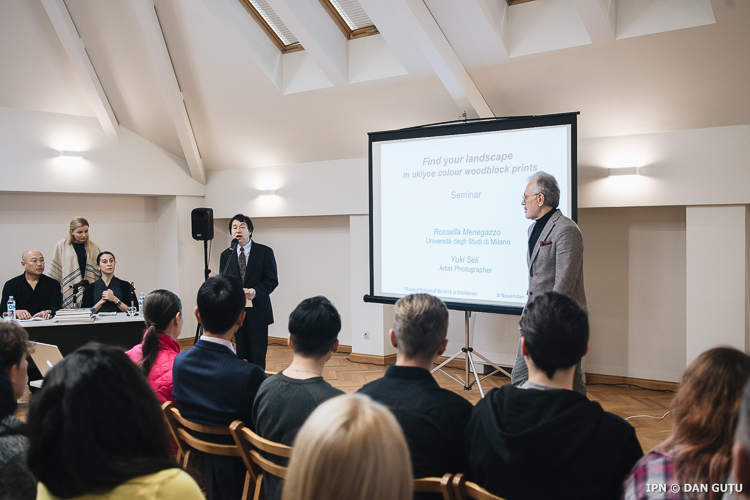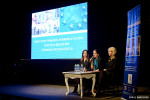
Chișinău teachers and students learned about Ukiyo-e art during a seminar organized by the Embassy of Japan in the Republic of Moldova at the National Art Museum of Moldova. The participants learned about the evolution of this type of Japanese since its appearance, to the present day.
The Japanese Ambassador to the Republic of Moldova, Masanobu Yoshii, explained that in Japanese "ukiyo" means "the world in movement", while "e" means painting. "Ukiyo-e" or "paintings of the moving world" are lithographs produced in Japan by using wood block techniques, between the XVIIth and the beginning of the XXth century. Most Ukiyo-e contain images of natural landscapes, historical events or theatrical scenes.
According to the ambassador, Ukiyo-e is a reflection of people's tastes and interests. The Edo era, between the XVIIth and XIXth centuries, is known as a period of peace in which domestic trade developed and the standard of living of citizens increased, especially of the inhabitant of the city of Edo - the old name of the capital of Japan, Tokyo. Japan's contact with other countries was very limited at that time, which influenced the development of Japanese culture. Due to the development of Ukiyo-e techniques, citizens were able to buy them at a modest price.
"An Ukiyo-e engraving is said to have cost as much as a plate of gravy. Due to being accesible, it became very popular and became a part of Japanese daily life", said the ambassador. According to him, even today, prints with Ukiyo-e can be found in the homes of most Japanese people. In the 19th century, Ukiyo reached Europe, where it impressed Western artists. This type of art is collected by painters, including by Moldovan painters.
Professor Rossella Menegazzo, from Italy, said that female beauty was one of the Ukiyo-e themes and in fact is the most sold on the Japanese market. Other popular themes were the images of the actors of the Kabuki theater, the fighters, the illustration of the daily life of the locals. According to the professor, once the influence of the samurai increased, the engravers were forced to limit the number of colors, and the images could no longer present feminine beauty nor the actors, because they were not supposed to exceed the grandeur and beauty of the samurai. This gave birth to pictures of flowers or birds.
The photographer Yuki Seli was also present at the event. The artist's works will be exhibited in January next year at the National Art Museum of Moldova.












